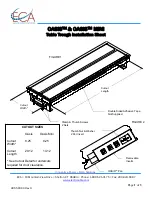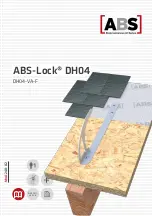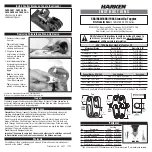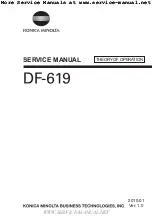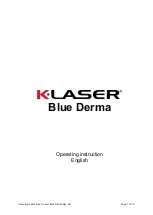
W W W . T M G I N D U S T R I A L . C O M P 3 / 2 5 T o l l F r e e : 1 - 8 7 7 - 7 6 1 - 2 8 1 9
All bystanders should be kept a minimum of 10 feet (3 meters) away from working area of
the attachment.
PROTECT AGAINST FLYING DEBRIS: Always wear an OSHA approved hard hat and
safety eye protection when operating or servicing this equipment. Do not wear loose fitting
clothing, flopping cuffs, dangling neckties and scarves, or rings and wrist watches that can catch
moving parts.
An operator must not use drugs or alcohol which can change his alertness or coordination.
An operator taking prescription or over-the-counter drugs should seek medical advise on whether
or not he can safely operate equipment.
Never alter or remove any safety decals or shields. Replace all missing or damaged safety
decals or safety shields. Check this manual for location of these items and replace immediately if
damaged or illegible.
Never adjust a relief valve for pressure higher than recommended by vehicle manufacturer.
Whenever changing or installing this or other attachments, make sure all connections are
securely fastened. Travel only with the attachment in a safe transport position to prevent
uncontrolled movement. Drive slowly over rough ground and on slopes. Remove attachment from
vehicle when transporting to and from job site.
LOWER OR SUPPORT RAISED EQUIPMENT: Before exiting vehicle, lower attachment to
ground, turn off vehicle engine and lock vehicle brakes.
Do not work under raised booms without
supporting them. Do not use support material made of concrete blocks, logs, buckets, barrels or
any other material that could suddenly collapse or shift positions. Make sure support material is
solid, not decayed, warped, twisted, or tapered. Lower booms and the attachment to ground level
or onto blocks before leaving the cab or operator’s station.
Never check a pressurized system for leaks with your bare hand. Oil escaping from pinhole
leaks under pressure can penetrate skin and could cause serious infection. Hold a piece of
cardboard up next to suspected leaks and wear a face shield or safety eye protection. If any fluid
is injected into the skin, it must be removed immediately by a doctor familiar with this type of
injury.
Before disconnecting hydraulic lines or fittings, be sure to relieve all pressure by cycling all
hydraulic controls after shutdown. Remember hydraulic systems are under pressure whenever
the engine is running and may hold pressure after shutdown. Before applying pressure to the
system make sure all connection are tight and that there is no damage to lines, fittings and hoses.
Flow and pressure gauges, fittings and hoses must have a continuous operating pressure
Summary of Contents for TMG-AB72
Page 1: ...W W W T M G I N D U S T R I A L C O M P 2 4 2 5 T o l l F r e e 1 8 7 7 7 6 1 2 8 1 9...
Page 22: ...W W W T M G I N D U S T R I A L C O M P 2 1 2 5 T o l l F r e e 1 8 7 7 7 6 1 2 8 1 9...
Page 25: ...W W W T M G I N D U S T R I A L C O M P 2 4 2 5 T o l l F r e e 1 8 7 7 7 6 1 2 8 1 9...





















